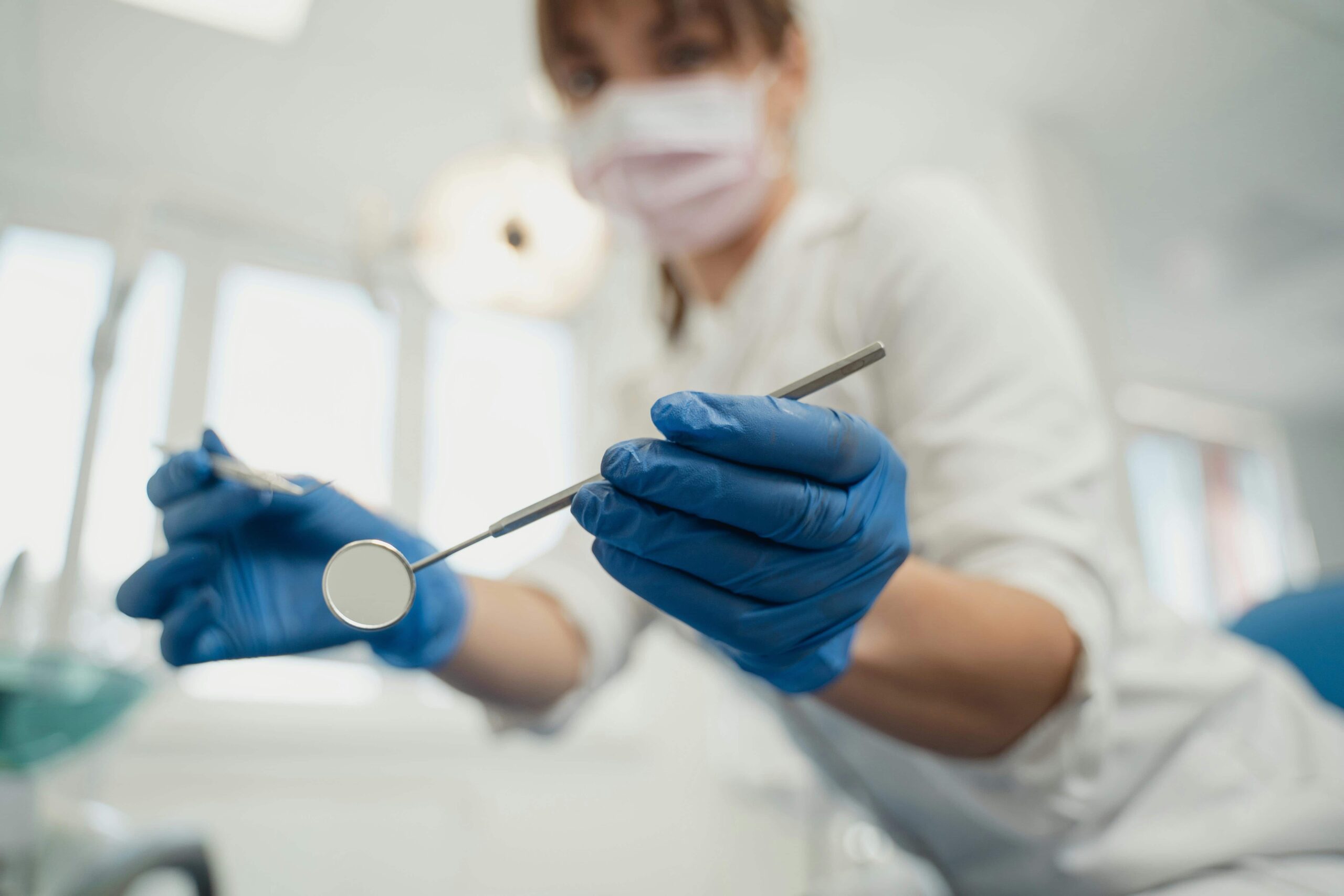Bone grafting is a common procedure that plays an important role in the success of dental implants. For patients in Midtown and Tribeca, NYC, understanding when bone grafting is necessary can make a significant difference in treatment outcomes. Bone grafting for dental implants in NYC involves rebuilding areas of the jawbone that may have weakened or deteriorated over time. Without a strong, healthy bone foundation, dental implants may not properly integrate or stay secure.
Bone loss can happen for many reasons, including tooth loss, gum disease, and injury. In cases where the jawbone is too thin or soft, bone grafting ensures that patients have the support needed for long-lasting implant results. At Expert Dental PC, our Midtown and Tribeca teams specialize in evaluating jawbone health and providing personalized grafting solutions when needed.
If you are considering dental implants in New York, NY, it’s important to work with a trusted team who can guide you through each step of the process. Below, we explain when bone grafting might be necessary, how the procedure works, and what you can expect as a patient at Expert Dental Midtown or Tribeca.
What Is Bone Grafting in Dentistry?
Bone grafting for dental implants in NYC is a specialized procedure that rebuilds or adds bone to areas of the jaw that have become too thin or weak. After tooth loss, injury, or gum disease, the jawbone can deteriorate, leaving an insufficient foundation for dental implants. Bone grafting involves placing bone material, either from your own body, a donor, or a synthetic source, into the weakened area to stimulate new bone growth.
By restoring the jawbone’s strength and volume, bone grafting ensures that dental implants have a stable and secure base. Without this foundation, implants may fail to integrate properly with the bone, leading to complications. At Expert Dental PC in Midtown and Tribeca, we use advanced grafting techniques to help patients qualify for successful, long-lasting dental implant treatment.
The Role of Healthy Bone in Dental Implant Success
A strong, healthy jawbone is crucial for dental implant success. Implants rely on the surrounding bone to anchor securely, just like natural tooth roots. After placement, implants undergo a process called osseointegration, where the bone heals and fuses directly with the implant surface. This creates a stable, durable foundation that allows implants to function naturally for chewing, speaking, and maintaining facial structure.
If the jawbone lacks the necessary height, width, or density, the risk of implant failure increases significantly. That’s why bone grafting for dental implants in NYC is often recommended when bone loss is detected. By strengthening the jawbone before implant placement, patients experience better outcomes and enjoy a more confident, lasting smile.
Why Bone Grafting Is Sometimes Needed Before Dental Implants
Not every patient automatically qualifies for dental implants. In many cases, bone grafting becomes necessary because of the natural process of jawbone resorption. When a tooth is lost or extracted, the surrounding bone no longer receives the stimulation it needs to stay strong. Over time, the bone begins to shrink or weaken, making it difficult to place a stable implant.
For patients in Midtown and Tribeca, addressing bone loss early can mean the difference between a simple implant procedure and needing additional surgical preparation. Bone grafting for dental implants in NYC helps rebuild areas of lost bone so that the implant can anchor securely and function naturally for years to come.
Causes of Jawbone Loss in Midtown and Tribeca NYC Patients
Several factors can contribute to jawbone loss in patients:
- Tooth loss: Missing teeth lead to a lack of stimulation in the jawbone, causing it to weaken over time.
- Gum disease (periodontitis): Chronic infection in the gums can gradually destroy the bone that supports your teeth.
- Trauma or injury: Facial injuries can damage the underlying bone structure.
- Developmental defects: Some individuals naturally have thinner or weaker jawbones, making them more prone to bone loss even without injury or disease.
Understanding these causes helps explain why early evaluation and intervention are so important for maintaining a healthy jaw and a confident smile.
Signs You Might Need a Bone Graft
While only a thorough evaluation at Expert Dental PC can confirm if you need a bone graft, here are some common indicators:
- Thin jawbone visible on an X-ray: Your dentist may notice that the bone ridge is too narrow or shallow to support an implant.
- Tooth loss that occurred several years ago: The longer a tooth has been missing, the greater the risk of significant bone loss.
- Gum recession and bone exposure: In severe cases of gum disease, the underlying bone becomes exposed, signaling advanced deterioration.
If you experience any of these signs, scheduling a consultation with a trusted dentist in Midtown NYC or Tribeca can help you understand your options for rebuilding your bone and restoring your smile.
How Bone Grafting Works: Step-by-Step Overview
Understanding the bone grafting process can help patients feel more confident about moving forward with treatment. At Expert Dental PC Midtown and Expert Dental PC Tribeca, we guide every patient through each step with careful planning, advanced technology, and personalized care. Here’s how bone grafting for dental implants in NYC typically works:
Consultation and Diagnosis
The first step is a detailed evaluation. Your dentist will take 3D cone beam CT scans, conduct a clinical examination, and assess your bone density. These tools help identify areas where bone is lacking and allow us to create a precise treatment plan. During your consultation at either our Midtown or Tribeca office, we’ll also discuss your medical history and overall health to ensure the best possible outcome.
The Bone Graft Procedure
On the day of the procedure, we will carefully place the chosen grafting material into the targeted area of the jaw. Graft materials may include your own bone, donor bone, or biocompatible synthetic options. The procedure is usually performed under local anesthesia with sedation available for added comfort. Our team uses minimally invasive techniques to ensure faster recovery times whenever possible.
Once the bone graft is securely placed, a protective membrane may be added to encourage proper healing. The area is then closed with sutures, and patients are given specific post-operative instructions to support recovery.
Healing and Recovery Phase
After the bone graft is placed, healing begins. Over the next few months, the grafted material integrates with your natural bone, a process known as osseointegration. This phase is critical because it builds the stable foundation your future dental implant will need.
Typically, it takes between three to six months for the bone to fully heal and become ready for implant placement. Your dentist will monitor your progress during this period and determine the ideal time to move forward with your dental implants in New York, NY.
Different Types of Bone Grafting Techniques Used in NYC
Bone grafting for dental implants in NYC is not a one-size-fits-all procedure. Depending on the location and severity of the bone loss, your dentist may recommend a specific type of grafting technique. At Expert Dental PC Midtown and Tribeca, we personalize every treatment plan to match the patient’s needs, ensuring the best possible support for future implants.
Here are three common types of bone grafting procedures we perform:
Socket Preservation
Socket preservation, also known as alveolar ridge preservation, is performed immediately after a tooth is extracted. A grafting material is placed directly into the empty socket to prevent the surrounding bone from shrinking. This technique is especially helpful for patients planning to replace a tooth with a dental implant soon after extraction. By preserving the bone structure early, socket preservation makes future implant placement faster, simpler, and more predictable.
Ridge Augmentation
Ridge augmentation is used when the jawbone has already lost significant width or height. Over time, untreated tooth loss can cause the bone ridge to narrow, making implant placement difficult. With ridge augmentation, grafting material is carefully added to rebuild the natural contour of the jaw. This technique helps create enough bone volume to securely hold dental implants and restore a more natural appearance to the gums and facial profile.
Sinus Lift Procedure
A sinus lift is necessary when placing implants in the upper back jaw, near the sinus cavities. In cases where the bone between the mouth and sinus is too thin, a sinus lift raises the sinus membrane and places grafting material underneath. This creates enough vertical bone height to safely and securely support implants in the upper jaw. Patients visiting our expert dental care teams at 110 East 40th Street in Midtown or 43 Warren Street in Tribeca can benefit from precise sinus lift procedures using advanced imaging and minimally invasive techniques.
Factors That Influence the Need for Bone Grafting
Not every patient who wants dental implants will need bone grafting. The decision depends on several individual factors that affect jawbone quality and quantity. At Expert Dental PC Midtown and Tribeca, we carefully evaluate each patient’s oral health, history, and lifestyle to recommend the best treatment plan. Here are some of the main factors that can influence the need for a bone graft:
Time Since Tooth Loss
The longer a tooth has been missing, the greater the chance that the surrounding bone has deteriorated. After a tooth is lost, bone resorption begins almost immediately and continues over time. Patients who have gone years without replacing a missing tooth often require bone grafting to rebuild enough structure for a stable dental implant.
Location of Missing Teeth
Where the missing tooth is located can also impact the need for a graft. Teeth in the upper jaw, particularly near the sinuses, often have less bone density naturally. Likewise, front teeth tend to have thinner bone structures compared to molars in the back of the mouth. For patients in Midtown and Tribeca seeking dental implants, a detailed 3D scan helps determine whether bone augmentation is necessary based on tooth location.
General Health and Lifestyle Factors
Certain medical conditions and lifestyle habits can weaken bone health, making grafting more likely. Smoking, diabetes, and osteoporosis are known to slow bone healing and reduce bone density. During your consultation at Expert Dental PC, we will review your overall health to ensure you have the best possible chance for successful grafting and implant integration.
What Happens If You Skip Bone Grafting Before Implants?
Skipping necessary bone grafting before dental implant placement can lead to serious complications. Dental implants rely on a strong, healthy jawbone for support. Without adequate bone structure, even the highest-quality implant can fail to integrate properly.
Here are some risks of proceeding without bone grafting:
- Implant failure: Without enough bone to anchor it, the implant may become loose, shift, or even fall out over time.
- Misaligned implants: Lack of bone support can cause implants to tilt, shift, or be placed at improper angles, affecting bite function and long-term stability.
- Poor esthetics: Insufficient bone can lead to sunken gums, gaps between implants and crowns, and a collapsed facial profile, impacting both appearance and self-confidence.
At Expert Dental PC Midtown and Tribeca, we believe in doing it right the first time. A thorough evaluation ensures that every patient gets the foundation they need for a beautiful, long-lasting smile. Bone grafting for dental implants in NYC, when recommended, is an important step toward achieving the best results with fewer complications down the road.
Frequently Asked Questions About Bone Grafting for Dental Implants in NYC
Is bone grafting painful?
Most patients are surprised by how comfortable the bone grafting process is. At Expert Dental PC Midtown and Tribeca, we use local anesthesia and sedation options to ensure patients feel relaxed throughout the procedure. Mild soreness after surgery is normal and can be managed easily with over-the-counter medications and home care instructions.
How long does a dental bone graft take to heal?
Healing time after a bone graft typically ranges from three to six months. During this period, the graft material integrates with your natural bone to create a strong foundation for the dental implant. Your dentist will monitor your healing progress at regular visits to determine the right time for implant placement.
Will insurance cover my bone graft in NYC?
Coverage for bone grafting varies depending on your dental insurance plan. Some policies may partially cover bone grafting if it’s deemed medically necessary for dental implant placement. Our staff at Expert Dental PC can help you review your insurance benefits and explore financing options if needed.
How do I know if I need a bone graft before implants?
A consultation with an experienced dentist near New York, NY, is the best way to determine if a bone graft is necessary. Through advanced imaging and clinical evaluation, your dentist can assess the volume and quality of your jawbone and recommend the right treatment plan for long-term implant success.
Can older adults in NYC still get bone grafts successfully?
Yes, many older adults in Midtown and Tribeca have successful bone grafting procedures. Age alone is not a limiting factor. As long as you are in good overall health and your jawbone can support healing, bone grafting remains a reliable option for preparing for dental implants.
Why Choose Expert Dental for Bone Grafting and Dental Implants in Midtown and Tribeca?
Choosing the right dental team for bone grafting and dental implants is crucial for achieving long-term success. At Expert Dental PC, we proudly serve patients at two convenient locations: 110 East 40th Street in Midtown and 43 Warren Street in Tribeca. Our experienced dentists specialize in personalized implant planning, advanced bone grafting techniques, and patient-centered care.
We use state-of-the-art technology, including 3D imaging and computer-guided surgery, to ensure precise diagnosis and treatment planning. Whether you need a simple socket preservation or a more complex sinus lift, our team delivers expert results in a comfortable, supportive environment.
If you are considering dental implants in New York, NY, our Midtown and Tribeca teams are here to guide you every step of the way. We combine years of expertise with a commitment to excellence, helping every patient achieve a stable, beautiful smile that lasts a lifetime.
Restore Your Smile with Expert Care in NYC
Bone grafting plays a vital role in preparing the jawbone for successful dental implant treatment. Whether you’ve recently lost a tooth or have been living with tooth loss for several years, rebuilding your jawbone can make all the difference in creating a stable, lasting smile. For patients in Midtown and Tribeca, Expert Dental PC offers advanced bone grafting solutions tailored to your individual needs.
Our expert dental teams at 110 East 40th Street and 43 Warren Street are committed to providing compassionate, high-quality care every step of the way. From your initial consultation to your final implant restoration, we are here to help you achieve a confident, healthy smile.
Contact us today to schedule your consultation and find out how bone grafting for dental implants in NYC can restore your oral health and transform your life.











